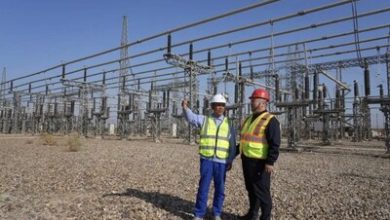DUBLIN–(BUSINESS WIRE)–The “Asia-Pacific Refractory Epilepsy Treatment Market: Analysis and Forecast, 2025-2035” report has been added to ResearchAndMarkets.com’s offering.
The Asia-Pacific refractory epilepsy treatment market is projected to reach $2.48 billion by 2035 from $1.04 billion in 2024, growing at a CAGR of 8.18% during the forecast period 2025-2035.
Healthcare professionals around APAC are utilizing developments in genetics, molecular diagnostics, and data-driven tools to create personalized treatment plans, going beyond the conventional “one-size-fits-all” approach.
The APAC refractory epilepsy treatment market is experiencing rapid growth, driven by a rising prevalence of drug-resistant epilepsy across both developed and emerging nations in the area. Seizures that are not responding to two or more anti-epileptic medications (AEDs) are known as refractory epilepsy, and they present serious health and financial difficulties. As a result, healthcare systems around Asia-Pacific are progressively implementing cutting-edge therapeutic approaches like precision medicine, neuromodulation (such as deep brain stimulation and vagus nerve stimulation), and minimally invasive surgery.
Technological developments in genetic analysis, neuroimaging, and EEG monitoring are making it possible to diagnose drug-resistant patients earlier and with more accuracy, allowing for more individualized and focused treatment plans. Leading nations in incorporating AI-driven diagnostics, cutting-edge AED formulations, and creative surgical techniques into routine care routes include China, India, South Korea, and Japan.
Even with significant advancements, issues including exorbitant treatment expenses, unequal access to specialized care, and low public awareness still prevent some areas of the region from seeing the best possible treatment results. These disparities are being filled, meanwhile, by rising investments in healthcare infrastructure, increased insurance coverage, and encouraging regulatory frameworks. Because of this, the APAC area is becoming a vital market for advancement and expansion in the treatment of refractory epilepsy.
How Can This Report Add Value to an Organization?
- Product/Innovation Strategy: The report offers in-depth insights into the latest technological advancements in refractory epilepsy treatment, enabling organizations to drive innovation and develop cutting-edge products tailored to market needs.
- Growth/Marketing Strategy: By providing comprehensive market analysis and identifying key growth opportunities, the report equips organizations with the knowledge to craft targeted marketing strategies and expand their market presence effectively.
- Competitive Strategy: The report includes a thorough competitive landscape analysis, helping organizations understand their competitors’ strengths and weaknesses and allowing them to strategize effectively to gain a competitive edge in the market.
- Regulatory and Compliance Strategy: It provides updates on evolving regulatory frameworks, approvals, and industry guidelines, ensuring organizations stay compliant and accelerate market entry for new Refractory Epilepsy Treatment solutions.
- Investment and Business Expansion Strategy: By analyzing market trends, funding patterns, and partnership opportunities, the report assists organizations in making informed investment decisions and identifying potential M&A opportunities for business growth.
APAC Refractory Epilepsy Treatment Market Trends, Drivers and Challenges
Trends
- Anti-epileptic drugs (AEDs) continue to dominate the market, though neuromodulation and surgical interventions are gaining traction.
- APAC is experiencing steady market growth, in line with global trends.
- Pediatric cases and focal epilepsy remain the most commonly treated segments in refractory epilepsy care.
- Integration of precision medicine and advanced diagnostics is shaping more personalized treatment approaches.
- Minimally invasive techniques such as laser ablation and neurostimulation are becoming more widely adopted.
Drivers
- High prevalence of drug-resistant epilepsy, especially in densely populated countries.
- Introduction of newer-generation medications offering better seizure control and fewer side effects.
- Increasing adoption of neuromodulation therapies like vagus nerve stimulation (VNS), deep brain stimulation (DBS), and responsive neurostimulation (RNS).
- Advancements in imaging, EEG analytics, and genomics supporting individualized treatment strategies.
- Rising healthcare investments and improved access to specialty care in urban centers.
Challenges
- High costs of newer drugs and neuromodulation devices limit access in low- and middle-income areas.
- Many drug-resistant cases go undiagnosed due to lack of awareness or limited diagnostic capacity.
- Shortage of specialized epilepsy care centers and trained neurosurgeons in rural regions.
- Social stigma and misinformation often delay treatment or lead to underreporting of symptoms.
- Limited insurance coverage for advanced therapies in several APAC countries.
Key Market Players
- SK Biopharmaceuticals
- Eisai, Inc.
Key Attributes:
| Report Attribute | Details |
| No. of Pages | 55 |
| Forecast Period | 2025 – 2035 |
| Estimated Market Value (USD) in 2025 | $1120.2 Million |
| Forecasted Market Value (USD) by 2035 | $2481.8 Million |
| Compound Annual Growth Rate | 8.1% |
| Regions Covered | Asia Pacific |
Key Topics Covered:
Executive Summary
Scope and Definition
1 Market: Industry Outlook
1.1 Major Trend
1.2 Trend in Refractory Epilepsy Treatment Market
1.2.1 Emerging Targeted Therapy for Refractory Epilepsy Treatment
1.2.2 Business Strategies
1.2.2.1 Product Developments
1.2.2.2 Market Developments
1.2.3 Corporate Strategies
1.2.3.1 Partnerships and Joint Ventures
1.2.4 Market Opportunities
1.2.4.1 Advances in Neuromodulation Devices in the Refractory Epilepsy Treatment Market
1.2.4.2 Shift from Neo-Adjuvant Approaches Driven by Diagnostic Advancements
1.3 Pipeline Drugs, Refractory Epilepsy Treatment
1.4 Trends
1.4.1 Emerging Targeted Therapy for Refractory Epilepsy Treatment
1.5 Market Dynamics
1.5.1 Trends, Drivers, Challenges, and Opportunities: Current and Future Impact Assessment
1.5.2 Market Drivers
1.5.2.1 Increasing Prevalence of Drug-resistant Epilepsy and Ever-expanding Pipeline of Novel Therapeutics
1.5.2.2 Growing Impact of Orphan Drug Development and Role of Advocacy Groups and Awareness Programs
1.5.2.3 Emerging Treatment Modalities in Refractory Epilepsy
1.5.3 Market Restraints
1.5.3.1 Off-Label Medication Practices Hindering the Refractory Epilepsy Treatment Market
1.5.3.2 High R&D Cost as a Barrier to New Entry for New and Small-Scale Companies
1.5.4 Market Opportunities
1.5.4.1 Advances in Neuromodulation Devices in the Refractory Epilepsy Treatment Market
1.5.4.2 Shift from Neo-Adjuvant Approaches Driven by Diagnostic Advancements
1.5.5 Market Challenges
1.5.5.1 Financial Constraints on Patient Access
1.5.5.2 Underdiagnosis of Patients who Meet the Criteria for Drug-Resistant Epilepsy (DRE)
2 Region
2.1 Regional Summary
2.2 Asia-Pacific
2.2.1 Regional Overview
2.2.2 Driving Factors for Market Growth
2.2.3 Factors Challenging the Market
2.2.4 China
2.2.5 Japan
2.2.6 India
2.2.7 South Korea
2.2.8 Australia
2.2.9 Rest-of-Asia-Pacific
3 Competitive Benchmarking & Company Profiles
3.1 Eisai, Inc.
3.1.1 Overview
3.1.2 Top Products/Product Portfolio
3.1.3 Top Competitors
3.1.4 Strategic Positioning and Market Impact
3.1.5 Key Personal
3.1.6 Analyst View
3.1.7 Research Initiatives
3.2 SK Biopharmaceuticals
4 Research Methodology
4.1 Data Sources
4.1.1 Primary Data Sources
4.1.2 Secondary Data Sources
4.1.3 Inclusion and Exclusion
4.1.4 Data Triangulation
4.2 Market Estimation and Forecast
For more information about this report visit https://www.researchandmarkets.com/r/58egtz
About ResearchAndMarkets.com
ResearchAndMarkets.com is the world’s leading source for international market research reports and market data. We provide you with the latest data on international and regional markets, key industries, the top companies, new products and the latest trends.
Contacts
ResearchAndMarkets.com
Laura Wood, Senior Press Manager
[email protected]
For E.S.T Office Hours Call 1-917-300-0470
For U.S./ CAN Toll Free Call 1-800-526-8630
For GMT Office Hours Call +353-1-416-8900





